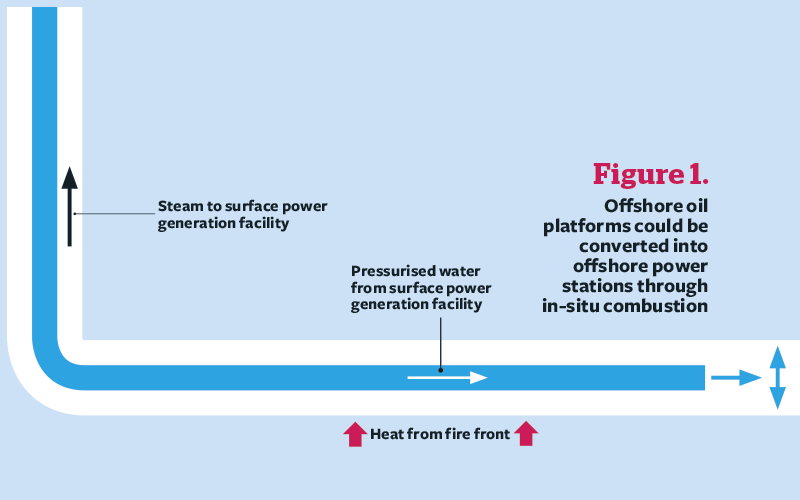Could offshore power stations solve our energy problems?
Can fossil fuels remain buried and still be an energy resource? Tom Baxter at the University of Aberdeen thinks so.

Some time ago the media asserted that in order to combat climate change a large proportion of the world’s oil, coal and gas reserves would have to remain in the ground. Climate change affects us all, its reach is global and without a doubt, the ‘keep it in the ground’ movement has many supporters.
But the benefits of fossil fuels need not be lost to us. Maybe there is a way of both keeping it in the ground and obtaining their inherent energy. Perhaps we can have our cake and eat it.
An alternative to CCS?
Currently oil and gas from the UK Continental Shelf (UKCS) are partially processed offshore, then pipelined or shipped many hundreds of kilometres to land. There, they are further treated: predominantly for use as fuel. While the inherent energy of fossil fuels is a very valuable commodity for society, the combustion process, as used for power generation, has well documented environmental consequences – global warming, smog and the effects of nitrous and sulphur oxides.
Increasingly, attention is being turned to combining fossil fuel power plants with carbon capture and storage (CCS). A common application is post combustion capture, whereby the carbon dioxide (CO2) is removed from the power station flue gases, treated to remove water and compressed to a pressure sufficient to liquefy the CO2. The liquefied CO2 is then pumped to a storage facility.
The proposed storage facilities are often depleted oil and gas fields, which are, as previously mentioned, situated many hundreds of kilometres from the power station. The process of carbon dioxide removal, treating and pumping is energy intensive, which is somewhat self-defeating.
Could oil platforms become offshore power stations?
So why don’t we move the power station to the oil and gas field? We could use in-situ combustion (ISC) where the oil and gas are burned in the containing rock, the heat generated is used to produce steam, the steam is taken to a surface facility, power is generated from the steam and transmitted to shore (Figure 1). No hydrocarbons are taken to the surface and the combustion products are locked within the sub-surface reservoir. We have our cake and we eat it!
While ISC sounds very novel, it has been used for many years for heavy oil production. The process involves the injection of air, enriched-air or oxygen to enable combustion of oil and gas within the reservoir, creating heat and the release of CO2. The application, however, is different from that proposed in this exposition. Instead of producing steam, the heat from the combustion front reduces oil viscosity and vapourises light oil components. Both of which enhance flow to the production wells. While it might be considered unsafe, it is not – isolate the oxygen supply and the combustion process is stopped.

Practicalities
However appealing as it might be, sub-surface steam generation and surface power production present numerous challenges and uncertainties. A very significant amount of research and development effort would be required to prove the concept and its commerciality.
Areas to be addressed would include:
- Modelling the combustion process
- Efficiency of heat transfer
- Steam well design
- Surface facility and transmission requirements
- Effect of the combustion products
- Reservoir seal integrity
- Integration with other offshore infrastructure
- Commerciality
Making it work
The aforementioned research and development would not come cheap. My view is that it would require such a level of investment, integration and commitment across the competing energy companies that the current UK set up would be a barrier to its implementation. To make something as radical as this concept work needs a state energy company – accepting that nationalising the remaining resource in the UKCS was necessary to maximise what was left. This sort of thinking is necessary if we are to achieve our climate change goals. Offshore power stations could be exactly what we are looking for.
Words: Tom Baxter, Senior Fellow in Checmical Engineering, University of Aberdeen.






Follow us
Advertise
Free e-Newsletter